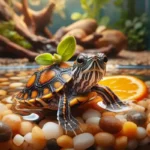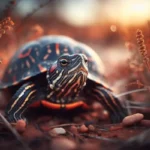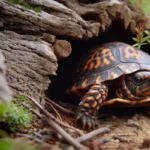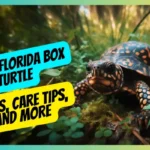If you are looking for something unique that will bring your outdoor adventures alive – look no further than the incredible Florida Snapping Turtle !
This magnificent reptilian creature inhabits various freshwater bodies such as lakes or rivers around Southeastern USA (mainly in Florida).
Its stout brown shell boasts vibrant patterns of orange spots accompanied by jet-black streaks, which causes any observer to pause and appreciate true beauty and marvel at Mother Nature’s handiwork!
Catch these turtles either sunbathing near shorelines in summers or angling from larger waterside locations year-round if you dare!
The Distinctive Features of the Florida Snapping Turtle
Physical Characteristics
The Florida Snapping Turtle boasts several distinctive physical traits that make it stand out from the crowd:

- Size and Weight: Adult Florida Snapping Turtles typically measure between 9 and 18 inches in length and weigh between 10 and 35 pounds. Males are generally larger than females.
- Shell and Skin Features: Their shells are dark brown to black, often covered in algae, and have a serrated posterior edge. It looks rugged because the skin is rough and covered in tubercles.
- Head and Jaw Structure: These turtles have large, triangular heads with powerful jaws and sharp beaks. Their eyes are positioned at the top of their heads, allowing them to see above water while submerged.
Unique Behaviors
Florida Snapping Turtles exhibit several intriguing behaviors:
Feeding Habits: They’re opportunistic feeders, consuming a wide variety of prey, including fish, amphibians, and even small mammals.
Employing a distinctive “lure” strategy, they wiggle their worm-like tongues to draw in unwary prey.
This hunting approach enables them to save energy while capturing a diverse range of prey.
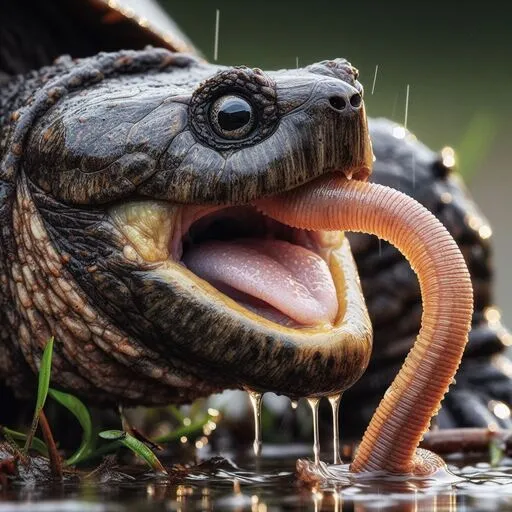
Defensive Strategies: When threatened, these turtles will either retreat into their shells or snap aggressively with their powerful jaws.
They’re known for their fearless demeanor and won’t hesitate to defend themselves.
Mating and Nesting Patterns: Florida Snapping Turtles mate in the spring, with females laying eggs in sandy soil or leaf litter.
The hatchlings emerge after about 100 days, already equipped with their snapping instincts.
The Natural Habitat of the Florida Snapping Turtle
Geographic Distribution
The Florida Snapping Turtle calls a specific region its home:
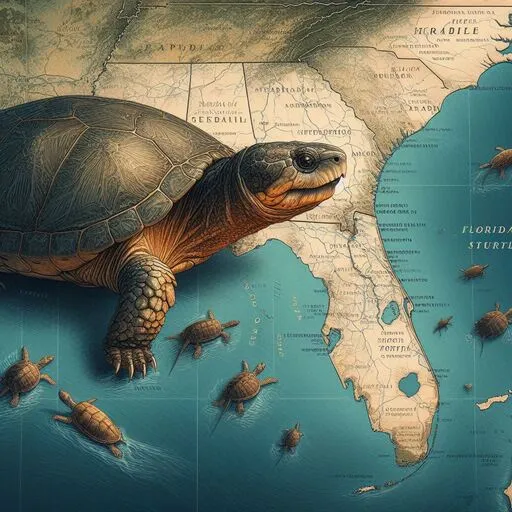
- Range and Population: This species is found primarily in Florida, southern Georgia, and southeastern Alabama. Freshwater habitats like lakes, ponds, rivers, and swamps are home to them.
- Preferred Environments: Florida Snapping Turtles prefer shallow, slow-moving waters with abundant vegetation and soft bottoms for burrowing.
Adaptations for Survival
These turtles have developed some impressive adaptations to thrive in their habitats:
- Camouflage and Stealth: Their dark, algae-covered shells and rough skin provide excellent camouflage, allowing them to blend seamlessly with their surroundings.
- Aquatic Locomotion: They’re strong swimmers, using their powerful limbs and long tails to propel themselves through the water with ease.
- Diet and Prey Selection: The Florida Snapping Turtle’s diverse diet and unique hunting technique enable it to thrive in various aquatic environments.
Human Interaction and Conservation Efforts
The Florida Snapping Turtle in Captivity
While they can be kept as pets, it’s essential to consider several factors:
Pet Ownership Considerations: Due to their large size, aggressive nature, and specific habitat requirements, Florida Snapping Turtles are not recommended for inexperienced turtle keepers.
Care and Husbandry Tips: They require large, well-filtered enclosures with plenty of hiding spots and basking areas.
For their health, a varied diet that includes fish, insects, and aquatic vegetation is crucial.

Additionally essential to ensuring their wellbeing are regular water quality tests and suitable lighting and heating systems.
Conservation Status and Threats
Like many species, the Florida Snapping Turtle faces some challenges:
- Current Population Trends: While their populations are stable in most areas, some localized declines have been observed due to habitat loss and pollution. Human activities, such as land development and water contamination, can have a significant impact on their survival.
- Environmental Challenges: Urbanization, agricultural runoff, and water pollution are the primary threats to the Florida Snapping Turtle’s habitat. These factors can lead to the destruction of their natural homes and a decline in prey availability.
- Efforts to Safeguard the Species: Preservation of wetland habitats and education about the need for safeguarding this rare reptile are the goals of conservation organizations. The survival of the Florida Snapping Turtle and the delicate balance of their ecosystems can both be ensured by supporting these activities.
Encounters with the Florida Snapping Turtle
Stories from the Wild
People who have encountered Florida Snapping Turtles often have unforgettable experiences to share:

Sightings and Observations: Many people enjoy observing these turtles in the wild, either while hiking near water sources or even encountering them in their backyards.
These random meetings may foster a deeper understanding of these fascinating animals and their place in the environment.
Close Calls and Memorable Experiences: A renewed respect for these formidable reptiles and thrilling anecdotes have resulted from some people’s up-close and personal interactions with them.
The significance of protecting wildlife and keeping a safe distance from wild creatures is emphasized by these stories.
The Role of the Florida Snapping Turtle in Local Culture
This unique reptile plays a part in the culture of the areas it inhabits:
- Folklore and Legends: In some communities, the Florida Snapping Turtle is featured in local legends and stories, often as a symbol of strength and resilience. The region’s cultural legacy is preserved and a sense of kinship with nature is encouraged by these stories.
- Educational Programs and Community Events: Public education on the Florida Snapping Turtle and its place in the ecosystem is the goal of many nature centers and wildlife organizations’ events and programs. These projects champion conservation activities and encourage people to get involved in the protection of their local wildlife.
Comparing the Florida Snapping Turtle to Other Turtle Species
Similarities with Other Turtles
The Florida Snapping Turtle shares some common traits with other turtle species:
- Shared Physical Traits: Like most turtles, they have a hard, protective shell and powerful limbs adapted for swimming. These features are essential for their survival and enable them to navigate their aquatic environments effectively.
- Common Behaviors: Many turtle species share similar behaviors, such as basking in the sun and burying themselves in the substrate for protection. These habits help regulate their body temperature and keep them safe from potential threats.
Differences That Set It Apart
However, the Florida Snapping Turtle stands out in several ways:
- Unique Anatomical Features: Their large heads, sharp beaks, and serrated shells distinguish them from other turtle species. These characteristics contribute to their distinctive appearance and impressive hunting abilities.
- Distinctive Lifestyle and Habits: Their fearless nature, powerful jaws, and unique hunting technique set them apart from their more docile relatives. These traits make the Florida Snapping Turtle an exceptional member of the turtle family.
Conclusion
The Florida Snapping Turtle is a unique and fascinating reptile like no other.
With its wide-ranging diet and distinctive features, it stands out among its peers, ensuring that no two sightings are the same!
Its hard shell and intriguing behaviors make it one of nature’s most captivating creatures – a must-see for any wildlife enthusiast.



